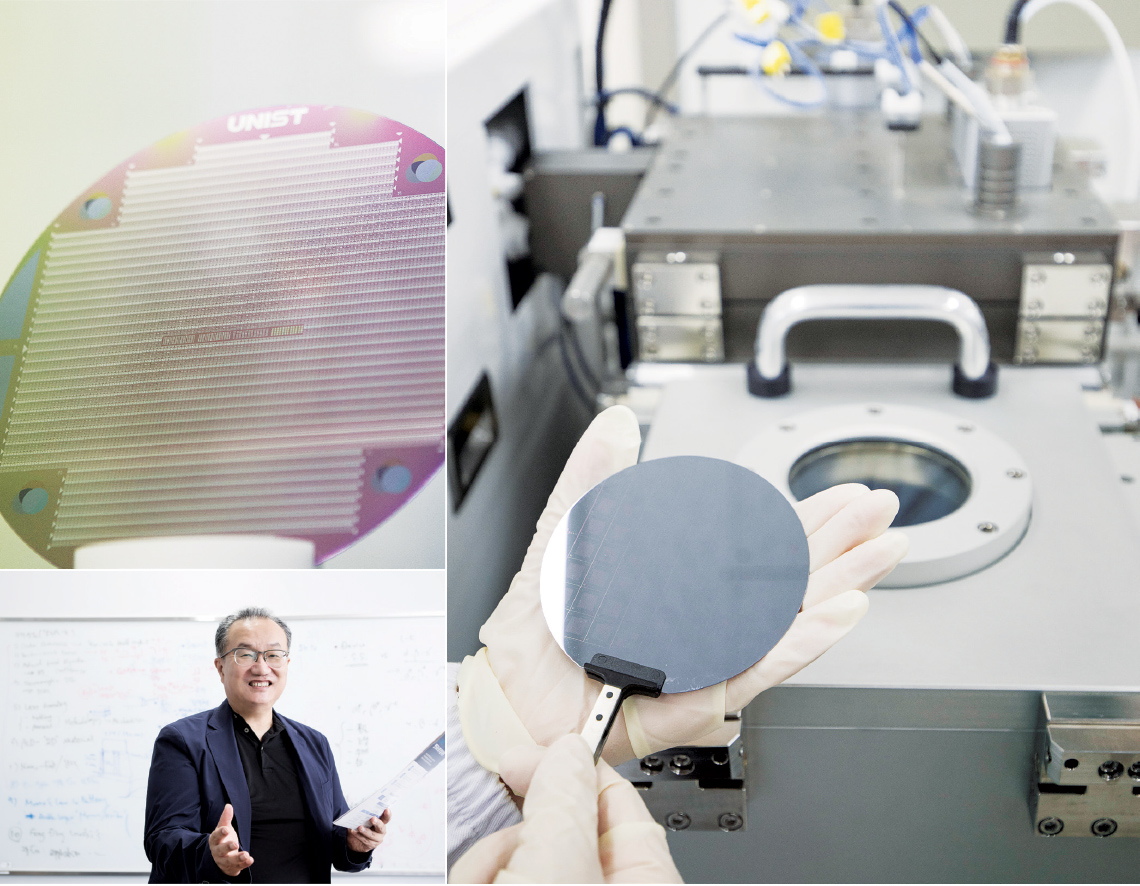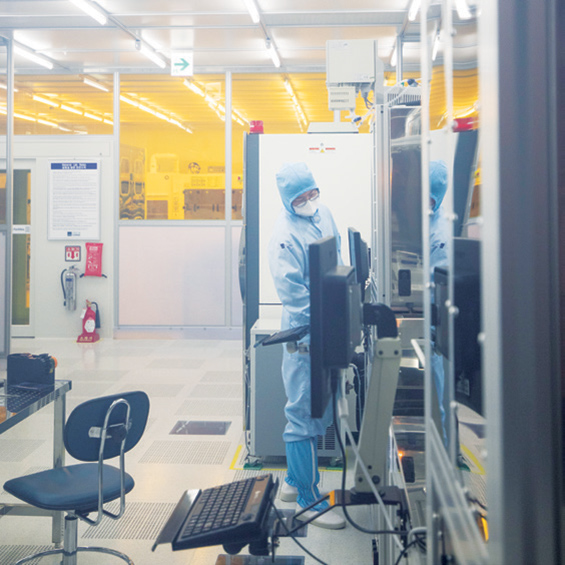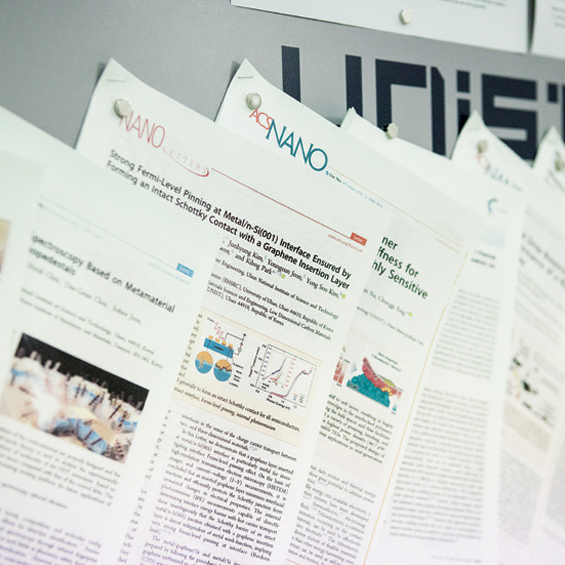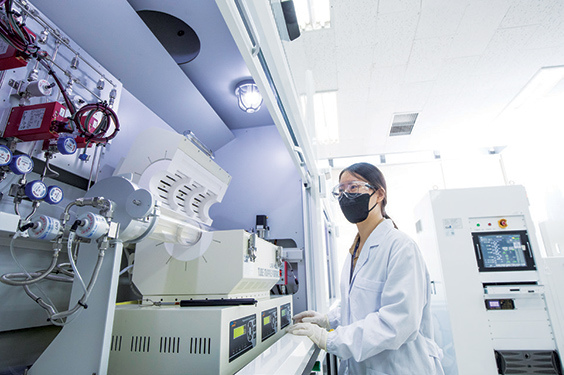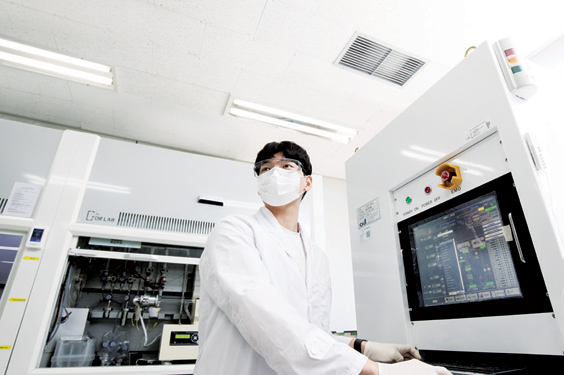
- INSIDE 1
- Official opening of UNIST graduate school of semiconductor materials and devices engineering
content area
An institution that cultivates talents to lay foundation for semiconductor powerhouse
official opening of UNIST graduate school
of semiconductor materials and devices engineering
Last September, UNIST opened the Graduate School of Semiconductor Materials and Devices Engineering.The graduate school was started with the purpose of fostering core talented personnel in the field of semiconductors that expects to see significant expansion and change in this era of the 4th Industrial Revolution. What is the strategy of the Graduate School of Semiconductor Materials and Devices Engineering in UNIST, which was opened after the long preparation period, to foster talented personnel, and in what ways are it different? We spoke to Chung Hong-Shik, dean of the Graduate School of Semiconductor Materials and Devices Engineering.
- Story by Editorial Room Photo by Kim Beom-Ki
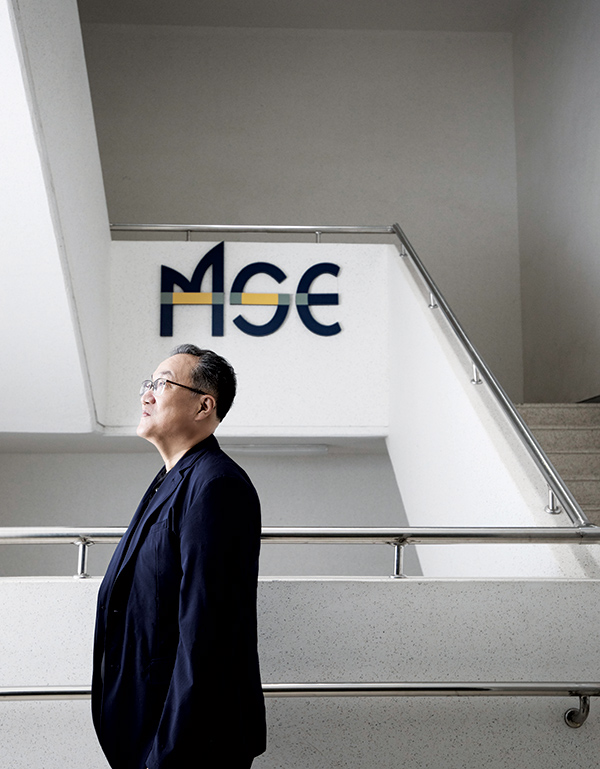 Chung Honk-Shik
Chung Honk-ShikDean of the Graduate School of Semiconductor Materials and Devices Engineering
- Q. Would you please introduce the Graduate School of Semiconductor Materials and Devices Engineering that was opened recently at UNIST?
- A. UNIST’s Graduate School of Semiconductor Materials and Devices Engineering was started to foster core talented personnel in the industry of semiconductor materials and parts and equipment, in line with the core strategy in the field of national R&D. Utilizing the research facilites for semiconductor in UNIST, we provide education centered on the intensive practices of high-notch semiconductor materials, processing and analysis, and plan to pursue joint research with overseas semiconductor research institutes and provide overseas training. With the goals of ‘research innovation around the core research on semiconductors’ and ‘the leading of semiconductor industry based on the self-directed fostering of talented personnel’, we plan to foster talented personnel with Master’s and PhD degrees who can define and solve problems in a self-directed manner.
- Q. It seems you have emphasized the fostering of talented personnel in the field of semiconductors.
- A. Everything begins with the question ‘What kind of talented personnel is needed in this era?’ The semiconductor industry is not only the basis for all other industries but also a core foundation of economic growth in the era of 4th Industrial Revolution. The semiconductor industry holds up about 20% of our industry in Korea and records almost 100 billion dollars in exports. In fact, in order to foster talented personnel in the field of semiconductors, many projects have been started under the supervision of the government and the private sector. However, considering the huge demand, the existing efforts were not sufficient to foster talented personnel for semiconductor materials & devices, equipment and processing. In the field of materials, UNIST retains the world’s highest level research capability. We were therefore convinced that our research capability would contribute both to the fostering of talented personnel who will serve as the core of semiconductor industry and to the creation of infrastructure.
- Q. I am curious about your thoughts regarding the distinct points pursued solely by the Graduate School of Semiconductor Materials and Devices Engineering.
- A. The Graduate School of Semiconductor Materials and Devices Engineering in UNIST has two goals, viz. ‘Procurement of Original Technology and Fostering of Talented Personnel’ and ‘Advancement of Local Industry’. The location characteristic retained by UNIST is background to this. Ulsan is a city that has grown on the basis of petrochemical industry. However, the chemical industry will inevitably lose competitiveness falling behind the scale of a late comer like China if it remains in the traditional way. . The key to overcome this crisis is to pursue advancement of the industry based on semiconductor materials. In a lecture room of the Graduate School of Semiconductor Materials and Devices Engineering, the undergraduates of UNIST work with staffs and employees of industries in the Ulsan area. We learn from each other. Students are young and creative with rich ideas about original technology. Staffs and employees have accumulated knowhow and a realistic outlook. The lecture room of the Graduate School of Semiconductor Materials and Devices Engineering in UNIST will thus a place where individual personalities and strengths converge. Through such convergence, I believe that we will see our graduates emerge into creative and talented personnel with higher understanding of practical works.
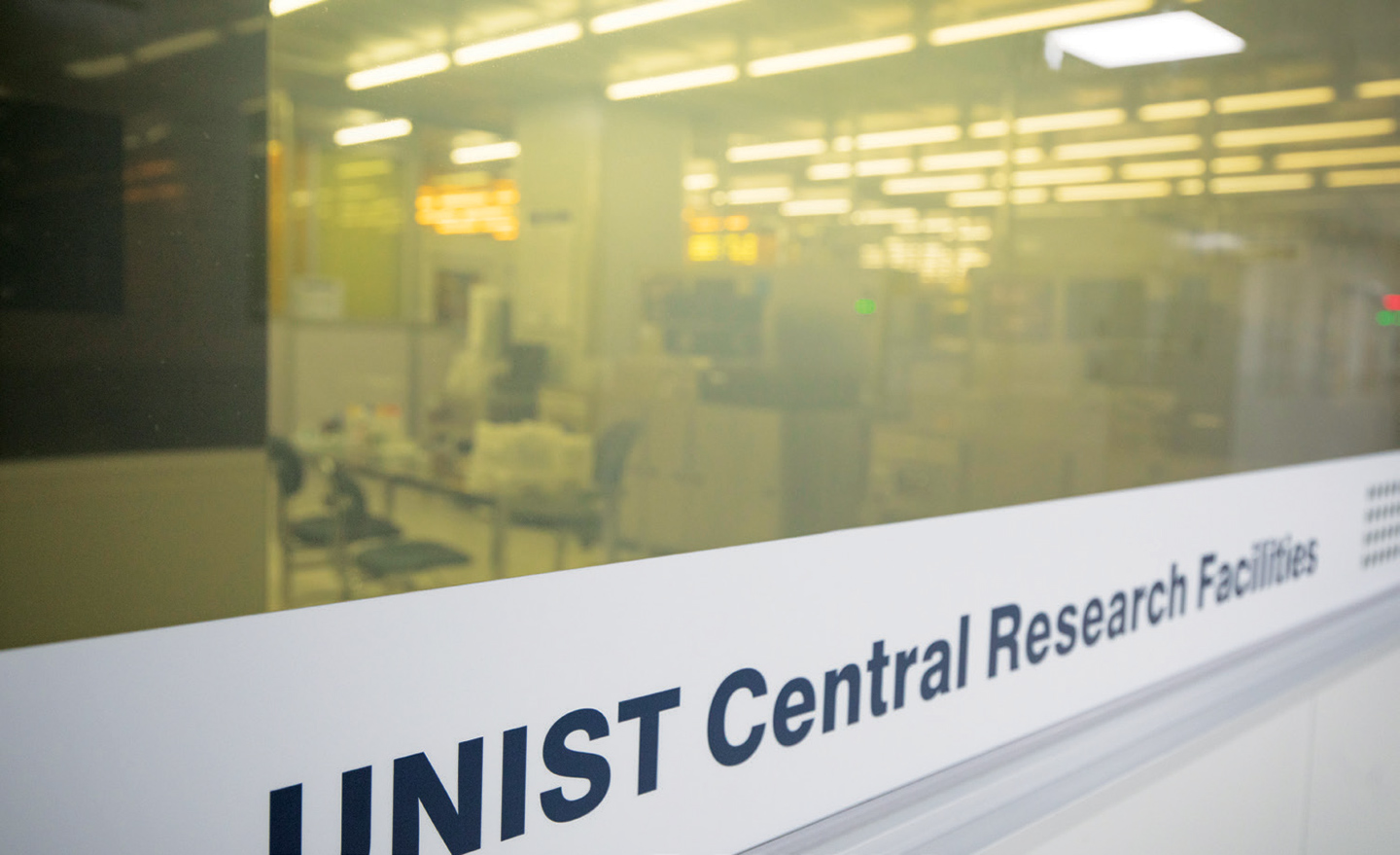
- Q. Then, the curriculum should be unique.
- A. Among core subjects started in September, there is a lecture on the ‘Practical Processing of Semiconductors’. For this lecture, current senior researchers from Samsung Electronics will visit UNIST directly. Students will accumulate proper understanding of technological trends and practical experience on semiconductors through the lineup of professional teaching staffs who work in the semiconductor industry. Two focal points were considered while composing the curriculum. The first point was for students not to lose their proactive nature and the second point was for them to have access to substantive experience that cannot be learned in the laboratory. When students stay in their schools, they might have a high degree of understanding of their own researches but they face difficulties when it comes to applying their researches to real industrial fields. The concept of industrial- academic collaboration was developed with a view to surmounting this difficulty. Yet, the truth is that it is difficult to learn enough only by a short project. Our curriculum therefore focuses on structuring the learning process in such a way that students develop a clear understanding of the practical works and flow of the semiconductor industry. Also, from the identification of research themes to their practices, we have composed the curriculum to help students acquire experience and take appropriate initiatives throughout the entire semester. Our final goal is for our students who have graduated from the Graduate School of Semiconductor Materials and Devices Engineering to be prepared immediately for practical works and understand and lead the entire gamut of practical works on semiconductors.
“Each research group will freely use diverse support to accomplish innovative outcomes. I believe this will be the responsible attitude in accomplishing the mission given to UNIST.”
- Q. It has been predicted that the role of semiconductor industry will be greater during the 4th Industrial Revolution. Is it because we are expecting something from semiconductor industry?
- A. You may think that the 4th Industrial Revolution is not related to the material industry. However, for the traditional industry of materials and devices, the convergence of new technologies such as AI and Big Data is important. Until now, the industry of materials and devices has been developed in a way that mixed previous traditional methods or materials continuously. But eventually this process is facing limitations. I believe that we can overcome the limitations of traditional industry through relentless efforts to find new technologies and other directions. Our graduate school will continue the research on AI and utilize the knowhow for the discovery and development of materials.
- Q. How will the development of AI technology affect the semiconductor industry?
- A. AI is software, but hardware is necessary for it to work efficiently. The hardware must be based on semiconductors. The world market has already witnessed immense growth of AI semiconductors. Individual enterprises have accelerated the fierce competition on AI semiconductors. To be successful in the competition, we must develop the semiconductor technology to its maximum level. As the domestic semiconductor technology has shown excellent performances in the field of devices and systems, I believe we can accomplish remarkable performances within the next 10 years if our graduate school can continuously foster talented personnel and supplement vulnerable points in the rather weak field of materials and equipment.
- Q. I wonder what kind of talents are required by the Graduate School of Semiconductor Materials and Devices Engineering.
- A. Anyone who has a keen interest in semiconductors, please knock at our doors. Semiconductor is an industry that covers diverse fields such as chemicals, physics, chemical engineering and machinery as well as electricity and electronics. It will be the icing on the cake if you have passion and interest in semiconductors. We are already living in the era of Big Data. Right at this moment, infinitely large volumes of data are being piled up. It means a bright future to this market. If anyone has a future dream and vision, I recommend that they pursue the challenge. The Graduate School of Semiconductor Materials and Devices Engineering will be a good venue to enhance and develop not only technical understanding of the research field but also the entire industry.
- Q. Lastly, what is the final goal and vision of the Graduate School of Semiconductor Materials and Devices Engineering?
- A. Our goal is to settle well in fostering talented personnel who possess excellent spirit to pursue research in the original technology and overall understanding of the semiconductor industry. Also, we want to contribute to the high growth of industrial entities that will continue the research together with our graduate school. Moreover, through the Graduate School of Semiconductor Materials and Devices Engineering, we have a dream to strengthen the local industry of Ulsan and the ecosystem of semiconductors and to establish the field of semiconductors as the strongest industry in Korea. It was the first step to open the graduate school in the field of materials and devices based on semiconductors. There will be trial and error but I sincerely ask for your affection and participation. With the pride that the most advanced initiatives have always originated from UNIST, we will take our first step.
